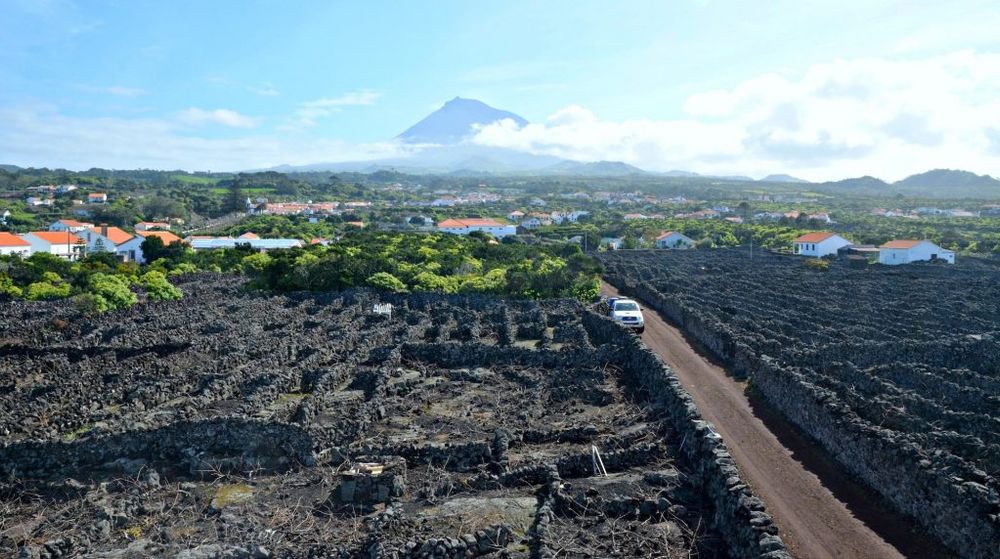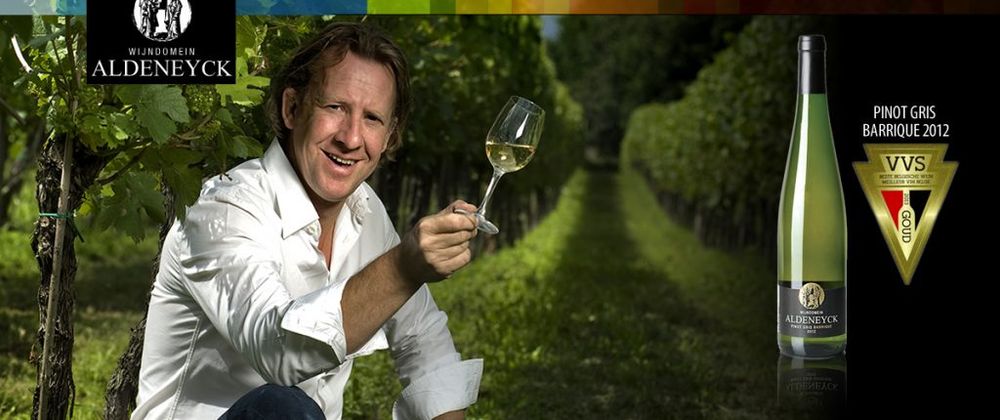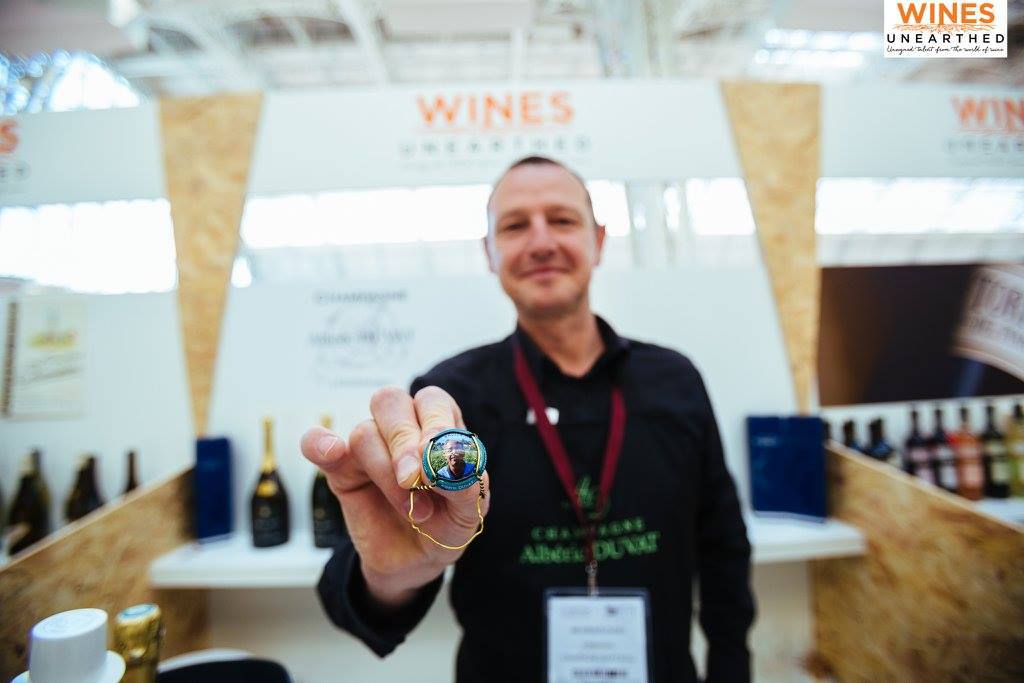If you had the time to explore then this year’s London Wine Fair had some of the most exciting and unusual wines trying to find a life for themselves in the UK.
Visiting wine fairs can be a bit soul destroying – there is too much of a scrum at some stands and not a lot of interest at others. The London Wine Fair is no exception, but where it seems to score is in the championing of small businesses. The Esoterica section had numerous small importers displaying their wares and the Wines Unearthed area had a number of small producers from all over the world looking for importers so that they could join the UK market.
What struck me, though, was the presence of producers from locations which I never really associated with good wine – let alone wine at all.
So here I am concentrating on five producers from three countries whose products opened my eyes.
Wine 1

First on the list was the Dos Hemisferios vineyard from Ecuador. Yes – Ecuador!
Located 15 minutes from the Guyaquil beaches, on limestone soil it is able to achieve wines of quality. The particular climate of the area and the proximity of the Canal de Cedege, helps to create the ideal conditions to harvest wine grapes. In 1999 it planted table grape varieties (Italy, Cardinal and Rivera), and encouraged by the excellent results, in 2004 took on the risk of harvesting grapes for wine.
It imported the best clones of Cabernet Sauvignon, Malbec, Merlot, PinotNoir, Shiraz and Chardonnay and with the experience of one of the best winemakers in Mendoza, Abel Furlan, it made its first wine: Paradox 2006 (a blend of Cabernet Sauvignon and Malbec). Expecting to be growing mango rather than Malbec, it was a paradox indeed. In 2008 it went on sale with a production of just 1,200 bottles. It now has 5 wine brands and is producing 50,000 bottles a year.
After Paradoja came Bruma ( currently a blend of Cabernet Sauvignon and Merlot) and Enigma (Chardonnay), and then Del Morro (Cabernet Sauvignon). The fifth wine: Travesía (Cabernet Sauvignon) was added in 2009.
Look, these are not world beating wines – all rate between 1 star plus and 2 star plus on the Wine Behind the Label rating system which you can find here.
These would be a super addition to any enterprising wine bar or restaurant who prize interesting diversity in their list above the safety of boring mediocrity.
Wine 2

Volcanic soils make an impressive backdrop to Pico Island in the Azores
Next – the Azores.
Located plumb in the middle of the Atlantic Ocean, it does have a temperate climate with frequent sea breezes to produce aromatic and mineral wines. The local co-operative, Pico Wines, has been producing wines since 1949, so the vines do have some age about them. Grown on the volcanic soil on the sides of Mount Pico, the main local white grape is Arinto do Açores. Their Terras de Lava Arinto do Açores, with a little Verdelho, both in the oaked and unoaked versions, are ideal for mineral seafood dishes, the unoaked wonderful with oysters or cuttlefish and the oaked version a little more mellow in order to take on a full frontal Bouillabaisse. 2 stars for both.
But what was surprisingly good was the Syrah with good varietal flavours and some complexity. 2 stars plus.
Traditionally, the island was noted for it’s sherry-like apéritif wines and the dry version is something of a cross between a Manzanilla and a Vin Jaune from the Jura. It’s pretty pungent and probably not going to go with much except perhaps olives. The sweet(er) version, however, is perhaps more of an end of meal drink accompanying nuts or sponge cakes. 2 stars plus here too.
Wine 3
Thirdly – Belgium.
Well, when you think about it (and I must admit that I never thought about Belgium being a wine producing country), the climate is not dissimilar to our South of England and we are beginning to make some pretty good stuff now, thanks to global warming, so why should’t the Belgians – especially those from the south of the country. Three Belgian producers were on hand to show their wares.

Aldenneyck, near the Dutch border at Maastricht, has three Pinots, Pinot Gris, Pinot Blanc and Pinot Noir. The Pinot Blanc has nice balance and the Pinot Gris oaked and unoaked are a little richer and sweeter – Choucroute comes to mind her as a dish to go with these, but the top wine – a Pinot Noir produced from the Dijon 777 clone has lovely balance and an unmistakably European Pinot Noir. 3 stars.
Wine 4
Genoies-Elderen concentrate on sparkling wines made from traditional Champagne methods and its sparklingChardonnay Blanc de Blanc, three years on the lees, gets a top mark of 3 stars from me. There are other cuvées just marginally less exciting and its still Chardonnay is a 2 star plus wine as well. Perhaps the Pinot Noir is a little less interesting but nevertheless a good effort.
Wine 5
Chateau Bon Baron from near the border with Luxembourg concentrates on a wider selection of grapes. Pinot Blanc, Pinot Gris and Chardonnay rate 2 stars plus and are very decent, but the most interesting wines here are the local indigenous Acalon,(a cross between Dornfelder and Lemburger) – chunky and ideal with a Carbonnade de Boeuf and a blend of two Swiss grapes – Gamaret and Garanoir with a hint of earthy garrigue to accompany some slightly less robust dishes.
All in all an interesting foray into what this wine fair has to offer and a true representation of the diversity of the world of wine. I hope some enterprising importers will take up these wines to keep the UK firmly ahead in the selection available to both the on and off-trade.
* Wine Behind The Label is a definitive guide of leading wine producers and their wines from all over the world. Now in to its 10th edition it has become a must have aid for sommeliers and on-trade buyers as it looks to give the most up to date reviews of individual wines vintage to vintage. The full printed version costs £65 and the digital version is £39. You can also download individual country and region guides for as little as £3-£4. The trade can now benefit from a new special membership scheme that gives exclusive access to new reviews and regional guides ahead of the next publication as well lots of other benefits. Trade membership is £50 a year or £15 a quarter.









































